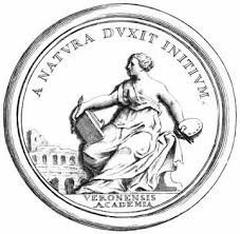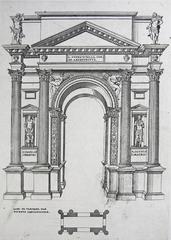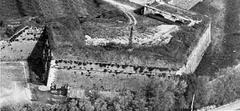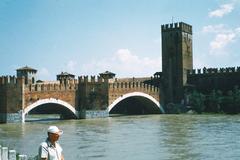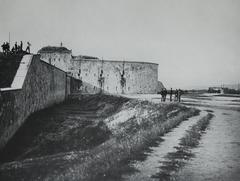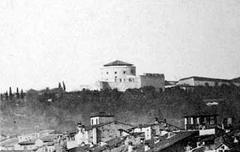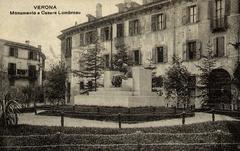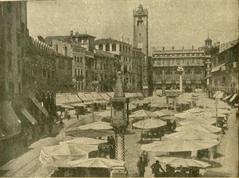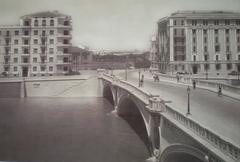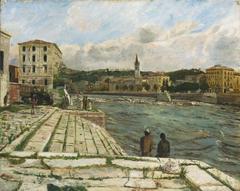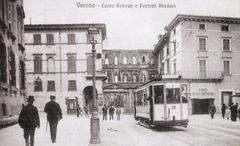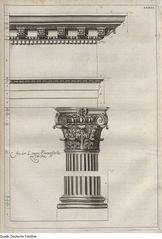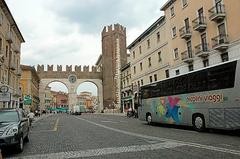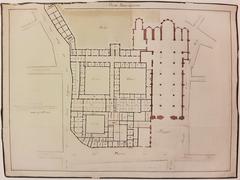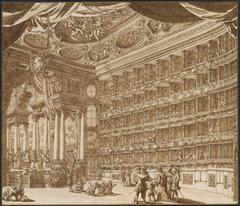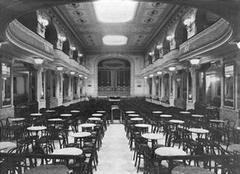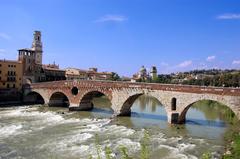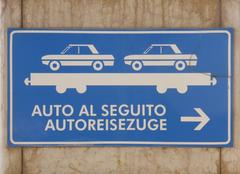
Castelvecchio Verona: Visiting Hours, Tickets, and Attractions Guide
Date: 04/07/2025
Introduction: Castelvecchio’s Historical Significance
Castelvecchio, perched on the banks of the Adige River, is a monumental emblem of Verona’s medieval past and a showcase for Italian architectural and cultural heritage. Built between 1354 and 1376 by Cangrande II della Scala, the castle served both as a military fortress and a symbol of the Scaligeri family’s dominance during a period of tumultuous northern Italian history. Its strategic location—integrated with the city walls and the fortified Ponte Scaligero—underscored its defensive and political importance (official Castelvecchio Museum website; Verona Tourism).
Through the centuries, Castelvecchio has evolved architecturally, bearing the marks of Venetian, Napoleonic, and Austrian rule, as well as the transformative restoration by architect Carlo Scarpa between 1958 and 1974. Scarpa’s innovative interventions elevated the castle into a world-class museum, blending medieval structure with modernist design and museography (archiobjects.org; architectuul.com). Today, Castelvecchio is not only a principal landmark and museum in Verona—housing masterpieces by Mantegna, Veronese, and Tintoretto—but also a living example of successful historical preservation and adaptive reuse.
Whether you’re intrigued by its architecture, its collection, or its layered history, Castelvecchio offers a unique journey through Verona’s rich heritage.
Table of Contents
- Medieval Origins and Strategic Purpose
- Architectural Evolution
- Castelvecchio’s Role in Verona’s Heritage
- Visiting Castelvecchio: Practical Information
- Preservation, Restoration, and Visitor Experience
- Frequently Asked Questions (FAQ)
- Conclusion and Visitor Tips
Medieval Origins and Strategic Purpose
Castelvecchio, meaning “Old Castle,” was conceived by the Scaligeri family to safeguard Verona’s western flank and assert their dynastic authority (official Castelvecchio Museum website). Constructed on the Adige River’s edge, the castle’s robust walls, seven towers, and central keep were designed to withstand prolonged sieges. The adjacent Ponte Scaligero (Castelvecchio Bridge) enabled rapid movement across the river during emergencies, making the castle a formidable defensive complex (Verona Tourism).
Architectural Evolution
Scaligeri Period (14th Century)
The castle’s original design reflects the military architecture of its era: red brickwork, Gothic arches, and crenellated battlements, all arranged in a rectangular layout protected by a moat and drawbridge.
Venetian and Napoleonic Modifications
Under Venetian rule after 1405, Castelvecchio served as a garrison and arsenal, with repairs preserving its medieval character. Napoleonic occupation brought significant alterations—conversion to barracks, demolition of towers, and the addition of a grand staircase as punitive measures against local resistance (acsa-arch.org). Subsequent Austrian rule further adapted the castle for military use.
20th-Century Restorations: Carlo Scarpa’s Intervention
Early 20th-century restoration aimed to recapture the castle’s medieval appearance. However, it was Carlo Scarpa’s work from 1958 to 1974 that defined Castelvecchio’s modern identity. Scarpa removed incongruous additions, exposed ancient layers, and introduced new pathways, staircases, and display systems—using concrete, steel, and glass in a way that respects and highlights the medieval structure (archiobjects.org; architectuul.com).
Castelvecchio’s Role in Verona’s Heritage
Symbol of Power and Defense
The castle’s imposing architecture and strategic placement made it a focal point of Scaligeri authority and Verona’s defensive system. The fortified Ponte Scaligero, built for military escapes and rapid reinforcements, remains an iconic symbol of the city (Verona Tourism).
From Fortress to Museum
Castelvecchio was repurposed as a museum in 1923, with its art collections originating from the early 19th century. Over time, it became the principal museum of Verona, displaying works by artists such as Mantegna, Bellini, and Veronese, alongside medieval arms and sculpture (ItalyGuides; Holidify).
The Castelvecchio Bridge (Ponte Scaligero)
This 14th-century bridge, integral to the castle’s defense, was destroyed in WWII and meticulously rebuilt to preserve its original character (Verona Tourism).
UNESCO World Heritage and Modern Significance
Castelvecchio is recognized as part of Verona’s UNESCO World Heritage status, illustrating best practices in historical preservation and adaptive reuse (UNESCO World Heritage).
Visiting Castelvecchio: Practical Information
Visiting Hours
- Tuesday to Sunday: 10:00 a.m. – 6:00 p.m. (last entry 5:15 p.m.)
- Closed on Mondays, December 25, and January 1
- Special openings on select holidays (Visit Verona)
Ticket Prices
- Adults: €9.00
- Reduced: €6.00 (groups 15+, seniors 65+)
- Youth (18–25): €2.00
- Children under 18: Free (under 14 must be accompanied)
- VeronaCard holders: Free
- First Sunday (Nov–Mar): €1.00
- Official ticket info
Advance booking is recommended, particularly during peak seasons.
How to Get There
- Location: Corso Castelvecchio, 2, 37121 Verona, Italy
- By foot: Short walk from Piazza Bra and the Verona Arena
- Public transport: Multiple city buses stop nearby; Porta Nuova train station is 1.5 km away
- By car: Limited parking; public transport is advisable
Accessibility
- Wheelchair-accessible routes with ramps and a lift to the first floor
- Some historic areas (e.g., towers) may have restricted access due to preservation constraints
- Accessibility details
Nearby Attractions
- Arena di Verona
- Piazza delle Erbe
- Juliet’s House
- Basilica di San Zeno Maggiore
- Numerous cafes, shops, and the historic Ponte Scaligero
Preservation, Restoration, and Visitor Experience
Scarpa’s restoration is celebrated as a model for integrating contemporary design within historic structures, allowing visitors to experience both the castle’s medieval defenses and its innovative museography (archiobjects.org). The museum offers 29 exhibition halls with over 600 works—including paintings, sculptures, weapons, coins, and decorative arts.
Guided tours (in multiple languages), interactive exhibitions, and family-friendly activities are available (TravelSetu). The museum’s courtyards, wall walkways, and panoramic views provide ample photographic opportunities.
Frequently Asked Questions (FAQ)
What are Castelvecchio’s visiting hours?
Tuesday to Sunday, 10:00 a.m. – 6:00 p.m. (last entry 5:15 p.m.), closed Mondays.
How do I purchase tickets?
On-site at the entrance or online through the official museum website.
Is Castelvecchio museum accessible?
Yes, with lifts and ramps for most galleries; some areas may be restricted.
Are guided tours available?
Yes, in multiple languages. Book in advance for the best availability (TravelSetu).
Can I take photos inside the museum?
Non-flash personal photography is allowed. Commercial photography requires authorization.
Are pets allowed?
Assistance dogs are welcome; small pets in carriers are allowed in some areas, but not during guided tours or special exhibitions.
Visitor Tips
- Time Required: Plan for 1.5–2 hours to explore the museum and castle grounds.
- VeronaCard: Purchase for free/reduced entry to Castelvecchio and other key sites (Visit Verona).
- Best Times: Early mornings and late afternoons are less crowded.
- Accessibility: Contact the museum ahead for detailed information if needed.
- Photography: Disable flash; respect signage regarding restricted areas.
- Combined Tours: Consider pairing your visit with the Arena di Verona and other nearby attractions.
Visual Resources

Alt text: Castelvecchio Castle in Verona showcasing medieval red brick walls and towers.

Alt text: The fortified red brick arches of Ponte Scaligero Bridge crossing the Adige River in Verona.
References and External Links
- Official Castelvecchio Museum website
- Verona Tourism - Castelvecchio
- UNESCO World Heritage - Verona
- Archiobjects.org: Museo Castelvecchio Verona - Carlo Scarpa
- Architectuul.com: Castelvecchio Museum
- ItalyGuides: Castelvecchio Museum
- Holidify: Castelvecchio Museum
Final Call to Action
Castelvecchio is not merely a relic of Verona’s past—it is a dynamic cultural hub and an outstanding example of architectural adaptation. Prepare for your visit by checking the latest information on the official Castelvecchio Museum website, and consider downloading the Audiala app for interactive tours. Don’t miss the chance to explore one of Italy’s most significant historical sites, and enhance your experience by discovering Verona’s many other attractions.



